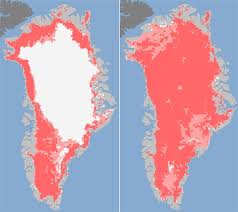WASHINGTON — Top international climate scientists and disaster experts meeting in Africa had a sharp message Friday for the world’s political leaders: Get ready for more dangerous and “unprecedented extreme weather” caused by global warming.
Making preparations, they say, will save lives and money.
These experts fear that without preparedness, crazy weather extremes may overwhelm some locations, making some places unlivable.
The Nobel Prize-winning Intergovernmental Panel on Climate Change issued a new special report on global warming and extreme weather after meeting in Kampala, Uganda. This is the first time the group of scientists has focused on the dangers of extreme weather events such as heat waves, floods, droughts and storms. Those are more dangerous than gradual increases in the world’s average temperature.
“We need to be worried,” said one of the study’s lead authors, Maarten van Aalst, director of the International Red Cross/Red Crescent Climate Centre in the Netherlands. “And our response needs to anticipate disasters and reduce risk before they happen rather than wait until after they happen and clean up afterward. … Risk has already increased dramatically.”
The report said “a changing climate leads to changes in the frequency, intensity, spatial extent, duration, and timing of extreme weather and climate events, and can result in unprecedented extreme weather and climate events.” And it said that some – but not all – of these extreme events are caused by the increase of man-made greenhouse gases in the atmosphere.
“We face many challenges in the future,” another study lead author, Chris Field of Stanford University, said in a news conference. Those include floods, drought, storms, and heat waves. Field said scientists aren’t quite sure which will be the biggest threat to the world because disasters are weather extremes interacting with economics and where people live. Society’s vulnerability to natural disasters, aside from climate, has also increased, he said.
Field told The Associated Press in an interview that “it’s clear that losses from disasters are increasing. And in terms of deaths, “more than 95 percent of fatalities from the 1970s to the present have been in developing countries,” he said.
Losses are already high, running at as much as $200 billion a year, said Michael Oppenheimer of Princeton University, a study author.
“Global warming is increasing the risk of disaster and already makes dealing with several types of disaster, like heat waves, more difficult. The risk will become greater as the future gets hotter,” he said.
Science has progressed so much in the last several years that scientists can now attribute the increase in many of these types of extreme weather events to global warming with increased confidence, said study author Thomas Stocker at the University of Bern.
Scientists were able to weigh their confidence of predictions of future climate disasters and heat waves were the most obvious. The report said it is “virtually certain” that heat waves are getting worse, longer and hotter, while cold spells are easing.
What that means is the nasty heat wave that used to happen once every 20 years by mid-century will be once every five years and by the end of the century will be an every other year scorcher, Field and Stocker said.
The report said there is at least a two-in-three chance that heavy downpours will increase, both in the tropics and northern regions, and from tropical cyclones.
The 29-page summary of the full special report – which will be completed in the coming months – says that extremes in some unnamed regions at some point in the future can get so bad that they may need to be abandoned.
Unless the world changes the way it deals with vulnerability disasters and climate change, “there’s going to be an increasing number of places where dealing with these disasters is going to be more and more difficult,” van Aalst said in a telephone interview. And in those cases, sometimes the most sensible option, he said, “may be to leave those places.”
Such locations are likely to be in poorer countries, he said, but the middle class may be affected in those regions, which aren’t specifically identified in the report. And even in some developed northern regions of the world, such as Canada, Russia and Greenland, cities might need to move because of weather extremes and sea level rise from man-made warming, van Aalst said. In places like van Aalst’s native Netherlands, citizens will have to learn how to handle new weather problems, in this case heat waves.
Scientists emphasized that governments have to be more prepared.
“Governments are not doing a good job now protecting us from disaster in the current climate,” Oppenheimer said.
And it’s not just the big headline grabbing disasters like a Hurricane Katrina or the massive 2010 Russian heat wave that studies show were unlikely to happen without global warming. At the Red Cross/Red Crescent they are seeing “a particular pattern of rising risks” from smaller events, van Aalst said.
Of all the weather extremes that kill and cause massive damage, he said, the worst is flooding.
There’s an ongoing debate in the climate science community about whether it is possible and fair to attribute individual climate disasters to manmade global warming. Usually meteorologists say it’s impossible to link climate change to a specific storm or drought, but that such extremes are more likely in a future dominated by global warming.
The panel was formed by the United Nations and World Meteorological Organization. In the past, it has discussed extreme events in snippets in its report. But this time, the scientists are putting them all together.
The next major IPCC report isn’t expected until the group meets in Stockholm in 2013.
___
Online:
 The American Meteorological Society (AMS) recently released their updated position in regards to climate change.
The American Meteorological Society (AMS) recently released their updated position in regards to climate change.
